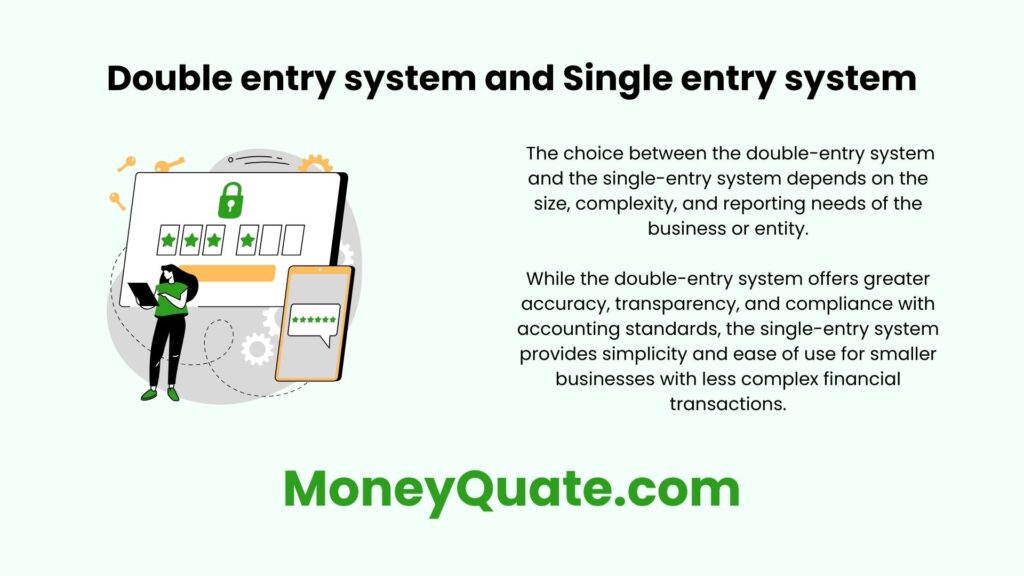Imagine running a lemonade stand. You track your sales (money coming in) and maybe even your ingredient costs (money going out). This basic record-keeping is similar to a single entry system in accounting. But what if you wanted a clearer picture of your stand’s financial health? That’s where the double entry system comes in!

As accountants, we use these two systems to record financial transactions.
Let’s delve deeper and see which system might be the right fit for you:
Contents
The Simple Starter: Single Entry System
Think of the single entry system as a one-way street.
You record each transaction only once, typically focusing on income (money coming in) and expenses (money going out).
It’s a good option for small businesses with straightforward finances.
Here’s an example:
You sell 10 cups of lemonade for $1 each, totaling $10 in sales. This would be recorded as a single entry of +$10 income.
Benefits of Single Entry
- Simple and Easy to Use: Anyone can grasp the basics of recording income and expenses.
- Low Cost: No need for expensive accounting software.
- Time-Saving: Perfect for businesses with minimal transactions.
Limitations of Single Entry
- Limited Financial Picture: It doesn’t track assets (what you own), liabilities (what you owe), or owner’s equity (your investment in the business).
- Error-Prone: There’s no built-in check for accuracy. Missing a single entry can throw everything off balance.
- Difficult for Growth: As your business grows, managing finances with a single entry system becomes increasingly challenging.
The Power of Two: Double Entry System
Now, picture a two-lane highway.
The double entry system records each transaction twice, with equal and opposite effects.
This creates a balanced picture of your finances.
Here’s the breakdown:
- Debit (Left Side): Represents resources going out (expenses) or assets increasing (inventory purchases).
- Credit (Right Side): Represents resources coming in (revenue) or liabilities increasing (loans taken).
Here’s an example of the lemonade stand using double entry:
You sell 10 cups of lemonade for $1 each (income). This is a +$10 credit to your “Sales” account.
You buy lemons and sugar for $5 (expense). This is a -$5 debit to your “Cash” account and a +$5 credit to your “Inventory” account.
Benefits of Double Entry
- Accurate and Complete Picture: Tracks all aspects of your finances, providing a clear overview of your business’s health.
- Error Detection: The system ensures debits and credits always balance, making it easier to catch mistakes.
- Financial Reporting: Double entry is essential for generating professional financial statements used by banks, investors, and others.
Limitations of Double Entry
- Steeper Learning Curve: Understanding debits and credits requires some basic accounting knowledge.
- Time Commitment: Recording transactions twice can be more time-consuming.
- Software Costs: Specialized accounting software might be necessary for complex businesses.
Choosing the Right System
The best system depends on your business size and complexity.
- Single Entry: Ideal for small businesses with simple finances and few transactions.
- Double Entry: Recommended for businesses with significant growth potential, complex finances, or needing professional financial reporting.
The Bottom Line
Both single entry and double entry systems have their place.
Understanding their pros and cons will help you choose the right one for managing your business finances.
Think of it like choosing the right tool for the job – a screwdriver won’t help you hammer a nail, but both are valuable tools!
2 thoughts on “Bookkeeping Basics: Demystifying Single and Double Entry for Your Business”